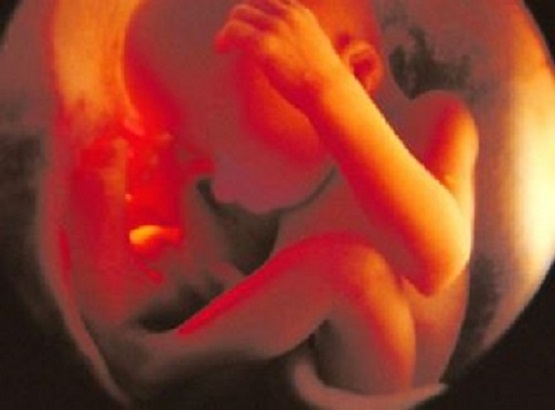Last Thursday, the ASAPscience channel on YouTube published a new video entitled What Actually Happens When You Have An Abortion? As of this writing, it has garnered over 1.5 million views and is #38 on trending. Take a moment to watch it now, and then we’ll delve into its inaccuracies.
The first section, on abortion methods, contains the usual euphemisms like “contents of the uterus,” but the narration is basically accurate. The accompanying animations, however, leave out the unborn child. In the abortion pill animation, the embryo is portrayed as a dot; in the discussion of later abortion methods, the fetuses aren’t portrayed at all. If they were, the depiction would be a lot more honest—and a lot harder for abortion advocates to defend.
With respect to the abortion pill, I appreciate that the makers of this video correctly stated that it is for use in the first 49 days of pregnancy (abortion lobbyists often use a later cutoff). However, for many women, the abortion pill results in more than just a “heavy period.” Some have even recovered the bodies of their embryos after taking the abortion pill, which can be emotionally traumatic.
We have already debunked the notion that late-term abortions are primarily done for health reasons.
If that’s where the video ended, I’d shrug it off as a more-or-less-true presentation with a normal level of pro-choice bias. The real problems come in the second half.
Follow LifeNews.com on Instagram to help us share pro-life pictures.
The video claims: “In the U.S., the risk of death associated with childbirth is fourteen times higher in women than that of an abortion.” This comes from CDC data, and unfortunately, the CDC’s abortion data is woefully incomplete. Reporting is not mandatory, and California, which accounts for a significant percentage of abortions, does not report its abortion data to the CDC.
More importantly, the CDC itself has stated that its abortion mortality rate and maternal mortality rate are not comparable:
The maternal mortality rate is computed as all maternal deaths per 100,000 live births. In contrast, the measure used for abortion is a case-fatality rate which is computed per 100,000 legal abortions. These measures are conceptually different and used for different public health purposes.
“All maternal deaths” is defined as “the death of a woman while pregnant or within 1 year of pregnancy termination–regardless of the duration or site of the pregnancy–from any cause related to or aggravated by the pregnancy or its management.” It includes deaths related to births, miscarriages, ectopic pregnancies, and abortions. It is not a pure measure of deaths from childbirth.
The video then claims that it’s a “myth” that abortion is linked to “difficulties … in carrying a future pregnancy.” That’s just bogus. The link between abortion and premature birth in a subsequent pregnancy is thoroughly well-documented.
The video goes on to talk about unsafe abortions “practiced by individuals without the necessary skills, or in an environment that does not conform to medical standards.” If all that means is “bad abortionists hurt more women,” okay, I accept the tautology. But the implication here is that legal means safe, and that’s simply false. Many dangerous abortionists practice their trade legally. The pro-life movement has worked very hard to make abortionists conform to medical standards, and have consistently been met with lawsuits.
The video claims: “Laws that limit a woman’s access to an abortion or make abortions illegal do not reduce the number of abortions. Countries where abortions are illegal have roughly the same number of abortions; what changes instead is the incidence of unsafe abortions.” Once again, the conflation of “legal” with “safe” is a problem here, but the real issue is that comparing the abortion rates of different countries introduces countless confounding variables. The better method is to compare abortion numbers in the same country both before and after laws are passed. Pro-choicers never do this, because the results don’t go their way. As the Washington Post (not known for supporting the right to life) acknowledges, the U.S. abortion rate increased significantly following Roe v. Wade.
The video’s concluding statements concerning the value of sex education and contraception are accurate, and Secular Pro-Life supports such efforts wholeheartedly. However, the decline in the abortion rate since 1990 is not entirely attributable to those efforts; after all, contraception was available prior to 1990! Undoubtedly, legal and cultural factors—such as the informed consent requirements upheld in Planned Parenthood v. Casey in 1992, the increased societal acceptance of single motherhood, and the rise of pregnancy care centers—have also contributed.
LifeNews Note: Kelsey Hazzard is the head of Secular Pro-Life and this article originally appeared at its blog.








